How to Use the Japan Rail Pass when Traveling Japan
I’ve been to Japan 6 times. Once as a broke backpacker when I skipped the Japan Rail Pass and used BRUTAL long buses instead (cheaper for sure, but a much worse experience). I’ve also done just Tokyo in a trip, where the JR pass isn’t worth it. All other times, the Japan Rail Pass has been a Godsend. Of course, first time around though, how to use the Japan Rail Pass can seem pretty daunting.
Travelling around Japan can feel like navigating a maze at times, but one of the best travel hacks out there is the Japan Rail Pass. If you’ve ever dreamed of zipping around Japan on their futuristic bullet trains, this pass is your golden ticket (literally). But let’s be honest, figuring out How to Use the Japan Rail Pass, understanding the costs, routes, and the fine print, can be a bit overwhelming.
In this post, I’ll break down everything you need to know about the Japan Rail Pass so that by the time you land in Tokyo, you’ll be cruising through the country like a seasoned local. Trust me, I’ve done the legwork, and once you get the hang of it, the JR Pass makes exploring Japan a breeze.
First, let’s work out How to Use the Japan Rail Pass and is the Japan Rail Pass worth it?
Table of contents
- How to Use the Japan Rail Pass when Traveling Japan
- What is the Japan Rail Pass?
- How Much is A Japan Rail Pass?
- Is the Japan Rail Pass worth it?
- Calculating if the JR Pass is Worth It
- Organising Your Japan Rail Pass: How to Buy It
- Step-by-Step Guide to Purchasing the JR Pass:
- JR Pass Routes: Where Can You Travel?
- JR PASS TOP ROUTES
- Costs of the Japan Rail Pass: Is It Worth It?
- How to Get Your Tickets and Plan Your Routes
- How to Reserve Seats:
- How Far in Advance Should You Reserve?
- Planning Your JRPass Routes:
- What’s Included in the JR Pass?
- What’s Not Included?
- FAQs
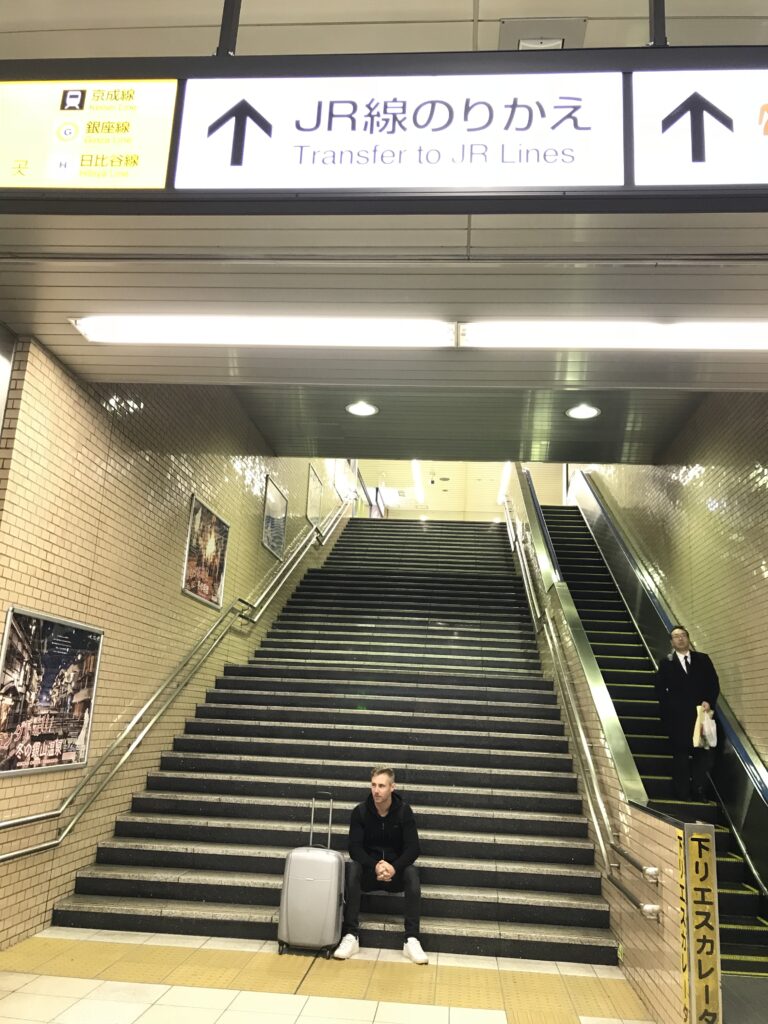
What is the Japan Rail Pass?
The Japan Rail Pass (JR Pass) is essentially a traveler’s dream, as long as you can afford it. Unlimited travel on the JR network, which covers the vast majority of Japan’s trains, including the famous Shinkansen bullet trains.
It’s one of the most affordable and convenient ways to travel around the country, but there’s a catch. It’s only available to foreign tourists. And you need to buy it before you arrive in Japan.
What do you mean by ‘JR Train’?
JR trains are operated by the Japan Railways Group and cover most of Japan, including the famous Shinkansen (bullet trains), local, and regional routes. Private trains, operated by other companies, typically serve smaller, local routes and aren’t covered by the Japan Rail Pass.
What % of trains in japan can i use with a JR pass
With the JR Pass, you can use approximately 70% of trains in Japan. The JR Pass covers all JR-operated trains, including the Shinkansen (except Nozomi and Mizuho), local JR trains, and some buses and ferries. However, it does not cover private railways, subways, or non-JR trains.
What is the shinkansen?
The Shinkansen, commonly referred to as Japan’s bullet train, is a network of high-speed railway lines that crisscross Japan, connecting major cities such as Tokyo, Osaka, Kyoto, Hiroshima, and many more.
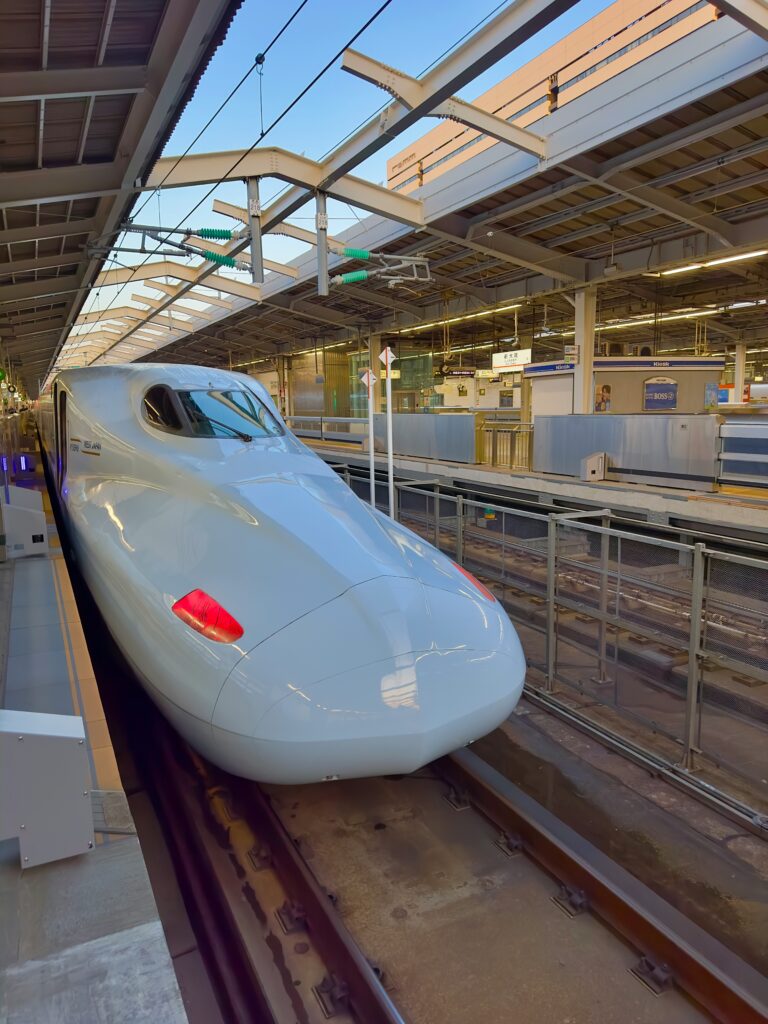
How Much is A Japan Rail Pass?
Here are the current prices for the Japan Rail Pass (JR Pass) as of 2024:
- 7-day JR Pass: ¥29,650 (about $220 USD)
- 14-day JR Pass: ¥47,250 (about $350 USD)
- 21-day JR Pass: ¥60,450 (about $450 USD)
Is the Japan Rail Pass worth it?
Whether the Japan Rail Pass is worth it depends largely on your travel plans and your budget.
If you’re planning to explore multiple cities or regions, the pass can save you a significant amount of money.
However, if you’re sticking to one city or region for the majority of your trip, it may not provide as much value. Let’s break it down to help you decide.
NOTE: If you’re on a super tight budget, then you can use long, slow buses for CHEAPER THAN THE JR PASS. I did that on my first trip to Japan. It turns 3 hour journeys into 13 hour journeys, but if you can afford the time, and not the money, then there are cheaper ways to travel.
When is the Japan Rail Pass Worth It?
1. Travelling Long Distances: If you plan to take several long-distance trips on the Shinkansen (bullet trains), the JR Pass is worth the investment. For example, a round trip between Tokyo and Osaka on the Shinkansen costs around ¥28,000 ($210). A 7-day JR Pass costs ¥29,650 ($220), so if you make just one return trip, the pass practically pays for itself.
2. Multiple Destinations: If you’re planning to visit multiple cities such as Tokyo, Nagano for the snow monkeys, Kyoto, Osaka, Hiroshima, or even go further afield to Hokkaido or Kyushu, the JR Pass offers excellent value as it allows unlimited travel on JR trains for the duration of your pass.
3. Flexible Travel: The JR Pass gives you the flexibility to hop on and off trains without having to worry about booking individual tickets. This is great if you’re more of a spontaneous traveller and want the freedom to change your plans on the go.
4. Convenience: The JR Pass is more than just a money-saver. It also means you won’t have to worry about buying tickets every time you travel, which can be especially helpful if you don’t speak Japanese or are travelling during busy periods.
When the Japan Rail Pass Might Not Be Worth It
1. Staying in One Area: If your trip is mainly focused on one region, like just Tokyo or Kyoto, it might be more cost-effective to buy individual train or subway tickets, as the JR Pass covers intercity travel but not most local subway lines. For example, if you’re staying within Tokyo and only taking day trips, the local Suica or Pasmo cards may be cheaper and easier.
2. Short Trips: If you’re in Japan for less than a week and only making one or two short trips, the cost of the JR Pass may outweigh the savings. For example, if you’re just travelling from Tokyo to Mount Fuji, a JR Pass wouldn’t provide as much value.
Calculating if the JR Pass is Worth It
To calculate whether the JR Pass is worth it for your trip, add up the cost of the individual tickets for your planned routes. If the total exceeds the cost of the JR Pass, you’ll save money by purchasing the pass. For example, WITHOUT THE JR PASS THESE ROUTES WOULD COST:
- Tokyo to Kyoto (one way): ¥14,170 (~$110)
- Kyoto to Osaka (one way): ¥560 (~$5)
- Osaka to Hiroshima (one way): ¥10,440 (~$80)
- Hiroshima to Tokyo (one way): ¥18,040 (~$135)
Total: ¥43,210 (~$330)
A 7-day JR Pass costs ¥29,650 (~$220), which saves you over $100 on this itinerary.
Bottom Line
The Japan Rail Pass is definitely worth it for travellers planning to explore multiple cities or take long-distance Shinkansen rides. If you’re sticking to a more localised area, you might want to compare the costs of individual tickets. However, even beyond the financial savings, the JR Pass offers a level of convenience and flexibility that can make your Japan trip smoother and more enjoyable.
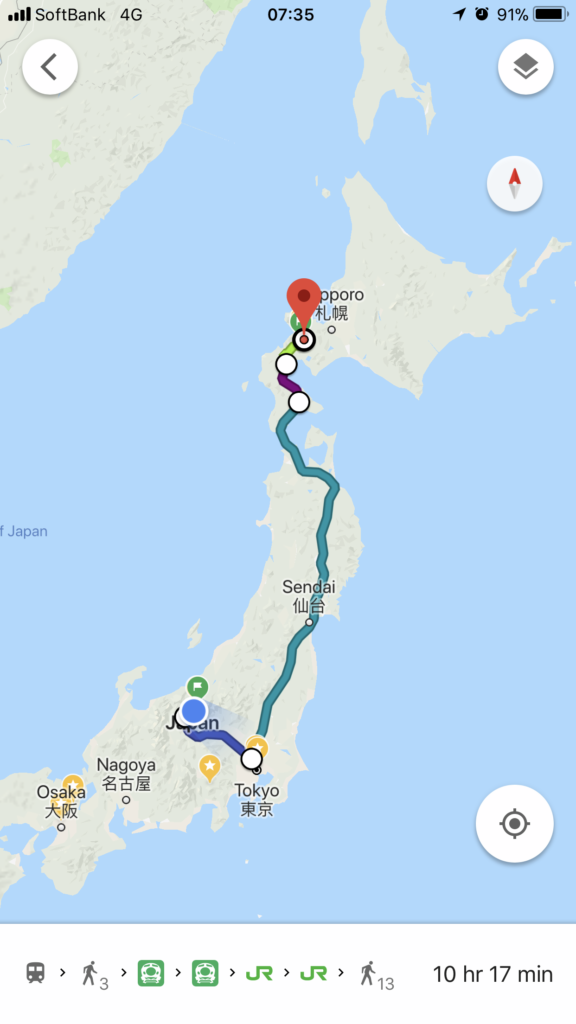
Organising Your Japan Rail Pass: How to Buy It
Before you even set foot in Japan, you’ll need to purchase your Japan Rail Pass. The easiest way to do this is online through the JRailPass website.
You simply choose the pass that best suits your travel plans, make the payment, and you’ll receive a voucher via post or email (depending on the type of pass you choose).
Step-by-Step Guide to Purchasing the JR Pass:
1. Visit the official JRailPass website: This is the best place to grab your pass, as it’s the official provider.
2. Choose your pass: You’ll need to decide between a 7-day, 14-day, or 21-day pass, depending on how long you’re staying and how much you plan to travel. More on costs in a bit.
3. Make your payment: Pay securely through the website. The pass itself isn’t cheap, but as you’ll see, it’s far more cost-effective than buying individual tickets for every train journey.
4. Receive your exchange voucher: After purchase, you’ll receive a voucher. This isn’t the actual rail pass – you’ll need to exchange this voucher for the real deal once you arrive in Japan (probably in Tokyo Airport, also possible in other airports and cities).
5. Exchange your voucher: Once you arrive in Japan, head to a JR exchange office (you can find these at most major airports or train stations) and swap your voucher for the JR Pass.
That’s it – you’re good to go!
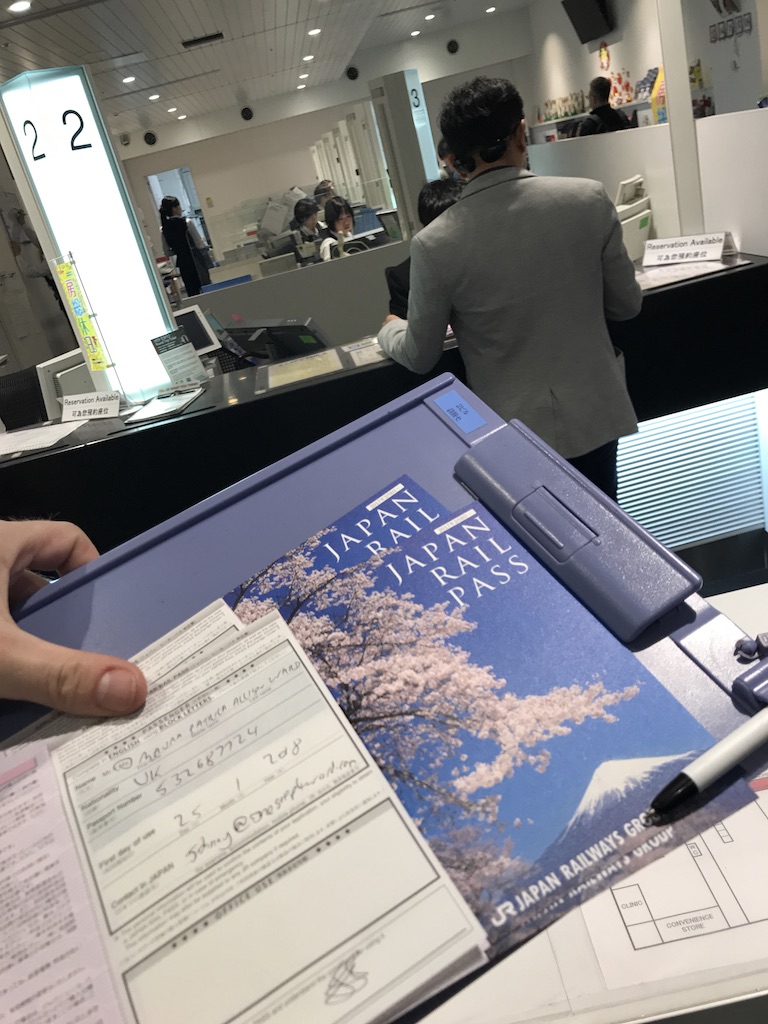
JR Pass Routes: Where Can You Travel?
The Japan Rail Pass grants you access to an extensive network of JR trains all across Japan. This includes:
- The Shinkansen bullet trains (with some restrictions on the very fastest classes, but more on that later).
- Local JR trains that connect Japan’s cities and towns.
- Some buses and ferries operated by JR, like the ferry to Miyajima.
The pass allows you to travel as much as you want, hopping from one city to the next. With unlimited rides on JR trains for the duration of your pass.
JR PASS TOP ROUTES
1. Tokyo to Kyoto/Osaka:
This is one of the most popular routes for travelers, as it allows you to zip between Japan’s capital and its cultural heartland. The Shinkansen makes the journey between Tokyo and Kyoto in about 2.5 hours. And from Kyoto, Osaka is just a short 15-minute train ride away.
2. Tokyo to Hiroshima:
If you’re keen on exploring Japan’s history, particularly the Peace Memorial in Hiroshima, the JR Pass covers the Shinkansen from Tokyo to Hiroshima, which takes around 4 hours. Well worth it for history buffs.
3. Sapporo in Hokkaido:
For those planning to visit Japan’s northernmost island, you can use the JR Pass to get from Tokyo all the way to Sapporo. Though it’s a long ride (about 8 hours), the scenic route through the countryside is beautiful, especially in winter.
4. Fukuoka in Kyushu:
Heading down south? No problem. The JR Pass will get you to Fukuoka, a lively city known for its incredible food, in about 5 hours from Tokyo.
The pass also covers many smaller routes connecting lesser-known gems. Japan’s train network is one of the most efficient in the world, so you’ll have no trouble bouncing between the places that catch your interest.
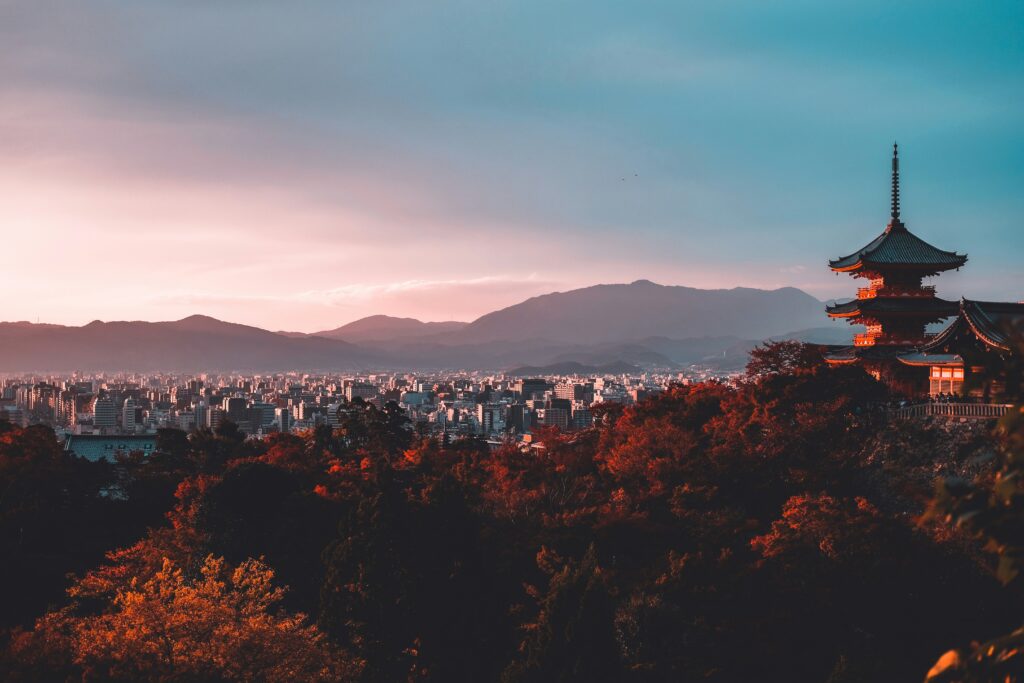
Costs of the Japan Rail Pass: Is It Worth It?
One of the big questions is whether the JR Pass is worth the investment. Here’s a breakdown of the prices for the standard JR Pass (for ordinary class seats):
- 7-day pass: ¥29,650 (roughly $220)
- 14-day pass: ¥47,250 (roughly $350)
- 21-day pass: ¥60,450 (roughly $450)
If you’re planning to take just a couple of Shinkansen trips, the pass is worth it. For example, a one-way ticket from Tokyo to Osaka on the Shinkansen costs around ¥14,500 (about $110), so a round trip alone almost covers the cost of a 7-day pass.
The Green Pass (the first class option)
For those who want a bit more luxury, there’s also the Green Pass, which grants you access to first-class seats. These are more spacious, quieter, and perfect if you’re doing longer journeys.
- 7-day Green Pass: ¥39,600 ($300)
- 14-day Green Pass: ¥64,120 ($500)
- 21-day Green Pass: ¥83,390 ($650)

How to Get Your Tickets and Plan Your Routes
Once you’ve exchanged your voucher for the JR Pass, you can start using it immediately. For local JR trains, just show your pass at the gate, and you’ll be allowed through. For Shinkansen and reserved seats, however, you’ll need to reserve a spot.
How to Reserve Seats:
1. Go to a JR ticket office (you can find these at most major train stations).
2. Show your JR Pass and request a seat reservation for your chosen train.
3. You’ll receive a physical ticket with your seat reservation.
You can also use JR’s automatic machines in some stations to reserve seats if you prefer not to wait in line. You can try to do it online, but it’s a nightmare.
How Far in Advance Should You Reserve?
• Normal travel days: If you’re traveling on regular weekdays, you usually don’t need to reserve seats more than a day or two in advance, unless you’re very particular about your seat or time.
• Busy periods: During peak travel periods like Golden Week, New Year’s, and Obon, it’s highly recommended to book your Shinkansen seats as early as possible — ideally as soon as reservations open (up to 1 month in advance). Trains fill up quickly during these times.
Can You Just Show Up for the Shinkansen?
Yes, you can simply show up at the station and hop on a non-reserved car of the Shinkansen, as long as there are available seats. Most Shinkansen trains have designated non-reserved cars, typically located towards the back of the train. These cars are first-come, first-served, so while it’s convenient, you might not always find a seat, especially during busy times like weekends, holidays, or peak travel seasons
Planning Your JRPass Routes:
One of the best tools for planning your routes is Hyperdia, a website that allows you to input your travel dates and destinations to find the exact train schedule, platform numbers, and whether the trains are covered by the JR Pass. Simply input your details and you’ll have your journey mapped out in seconds.
What’s Included in the JR Pass?
The JR Pass covers a wide range of transportation options across Japan. Here’s a breakdown of what’s included:
- Unlimited travel on all JR trains, including local trains and Shinkansen bullet trains.
- Local JR buses in some cities, like Hiroshima.
- JR ferries, such as the one to Miyajima Island.
- Limited express trains and regional express trains (as long as they’re operated by JR).
What’s Not Included?
While the JR Pass covers a lot, there are a few things it doesn’t include:
- Nozomi and Mizuho trains on the Tokaido and Sanyo Shinkansen lines (these are the fastest trains, but don’t worry, you can still take the slightly slower Hikari or Sakura Shinkansen on the same routes).
- Private railways that aren’t operated by JR (this can be a bit confusing, as some cities have private train operators).
- Subway lines within cities like Tokyo and Osaka (these aren’t JR lines).
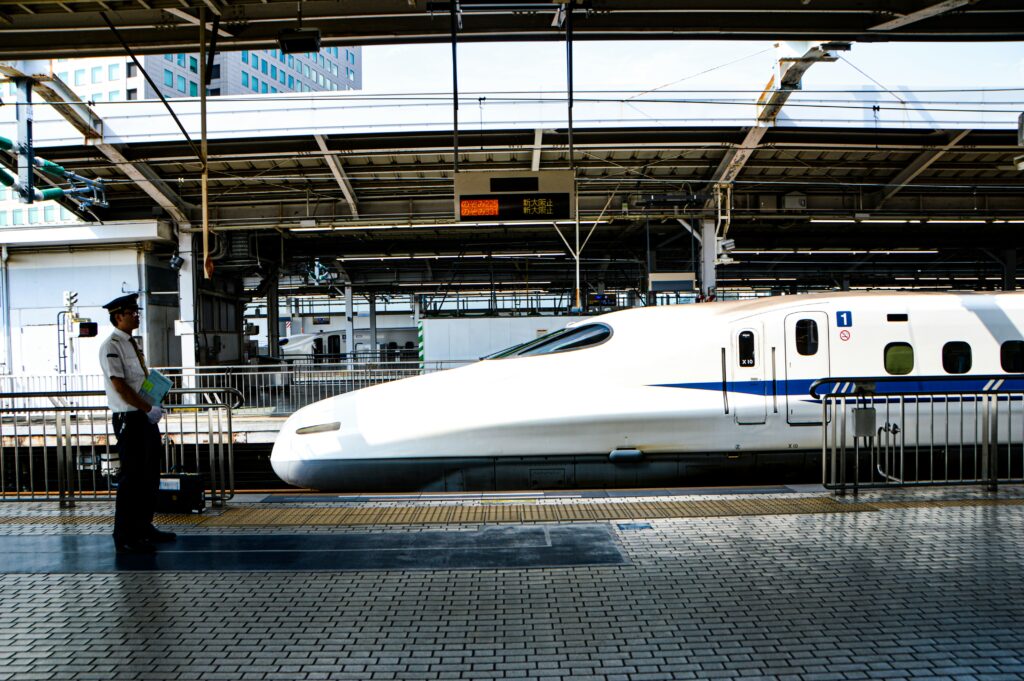
FAQs
1. Can I buy the JR Pass in Japan?
No, you need to purchase the JR Pass before you arrive in Japan. You can buy it online through the JRailPass website.
2. Can I use the JR Pass for unlimited travel?
Yes! The JR Pass gives you unlimited travel on all eligible JR trains for the duration of your pass (7, 14, or 21 days).
3. Is the JR Pass worth it if I’m staying in just one city?
If you’re staying mostly in Tokyo or Osaka, the JR Pass might not be worth it. However, if you’re planning to travel between multiple cities or regions, the pass is definitely cost-effective.
4. Can I use the JR Pass on the Tokyo Metro?
No, the JR Pass doesn’t cover the Tokyo Metro, which is a private subway system. However, it does cover JR local trains within Tokyo, like the Yamanote Line.
Exploring Japan with the JR Pass is a game-changer for anyone wanting to see more of the country, from its buzzing cities to its peaceful countryside. It might seem complicated at first, but once you get the hang of it, you’ll be zipping around Japan faster than you can say “Shinkansen.”
Remember, never travel without travel insurance! And never overpay for travel insurance!
I use HeyMondo. You get INSTANT quotes. Super cheap, they actually pay out, AND they cover almost everywhere, where most insurance companies don't (even places like Central African Republic etc!). You can sign-up here. PS You even get 5% off if you use MY LINK! You can even sign up if you're already overseas and traveling, pretty cool.
Also, if you want to start a blog...I CAN HELP YOU!
Also, if you want to start a blog, and start to change your life, I'd love to help you! Email me on johnny@onestep4ward.com. In the meantime, check out my super easy blog post on how to start a travel blog in under 30 minutes, here! And if you just want to get cracking, use BlueHost at a discount, through me.
Also, (if you're like me, and awful with tech-stuff) email me and my team can get a blog up and running for you, designed and everything, for $699 - email johnny@onestep4ward.com to get started.
Do you work remotely? Are you a digital nomad/blogger etc? You need to be insured too.
I use SafetyWing for my digital nomad insurance. It covers me while I live overseas. It's just $10 a week, and it's amazing! No upfront fees, you just pay week by week, and you can sign up just for a week if you want, then switch it off and on whenever. You can read my review here, and you can sign-up here!













 As you know, blogging changed my life. I left Ireland broke, with no plan, with just a one-way ticket to Thailand
and no money. Since then, I started a blog, then a digital media company, I've made
more than $1,500,000 USD, bought 4 properties and visited (almost) every country in the world. And I did it all from my laptop as I
travel the world and live my dream. I talk about how I did it, and how you can do it too, in my COMPLETELY FREE
Ebook, all 20,000
words or so. Just finish the process by putting in your email below and I'll mail it right out to you immediately. No spam ever too, I promise!
As you know, blogging changed my life. I left Ireland broke, with no plan, with just a one-way ticket to Thailand
and no money. Since then, I started a blog, then a digital media company, I've made
more than $1,500,000 USD, bought 4 properties and visited (almost) every country in the world. And I did it all from my laptop as I
travel the world and live my dream. I talk about how I did it, and how you can do it too, in my COMPLETELY FREE
Ebook, all 20,000
words or so. Just finish the process by putting in your email below and I'll mail it right out to you immediately. No spam ever too, I promise!
